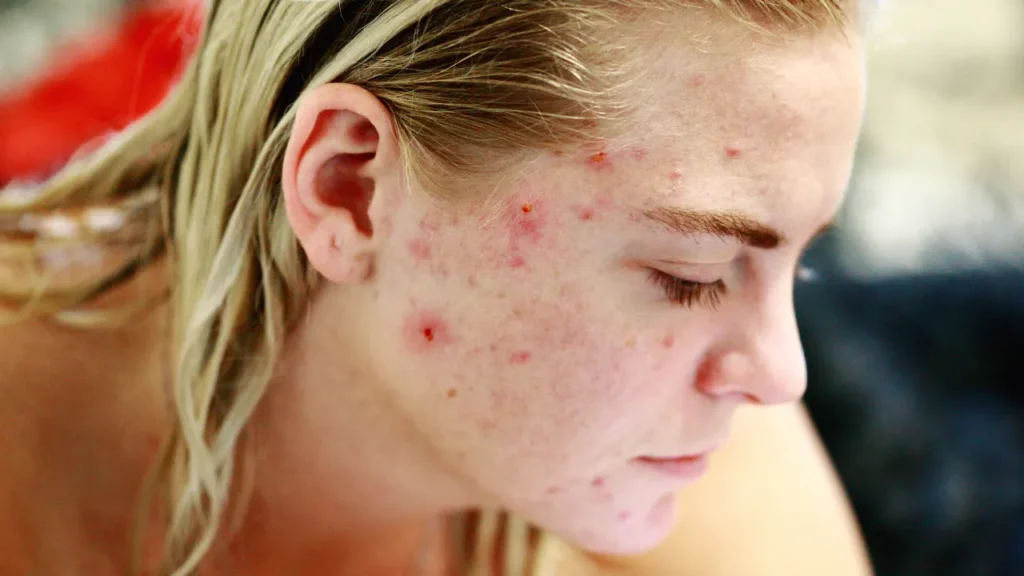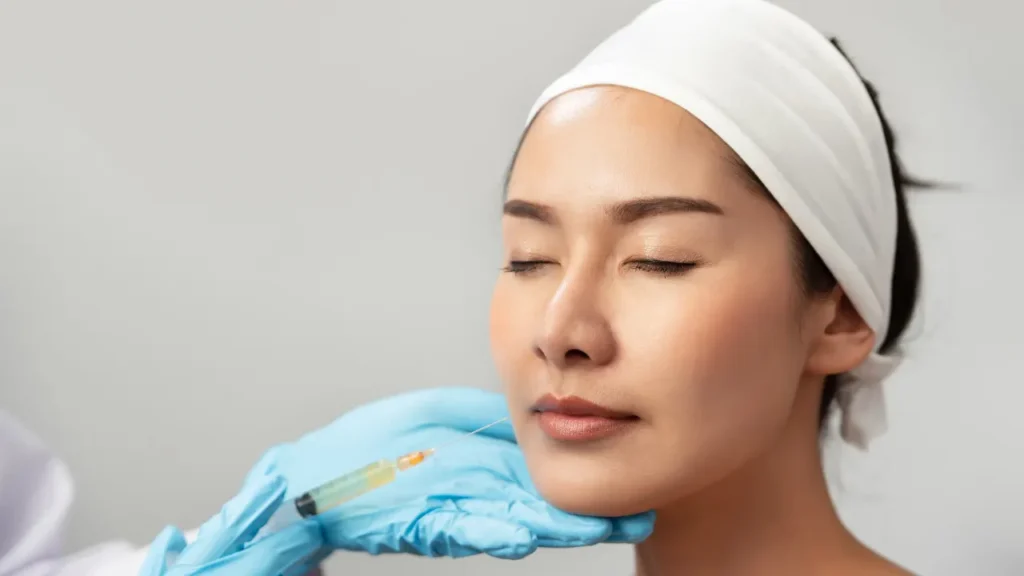Description
Whenever the dermis, the skin’s deeper layer, suffers damage, scarring can occur, which is a normal byproduct of the healing process. In terms of texture, appearance, and color, scars can range from minor to severe. Scars commonly manifest themselves as elevated, thicker, or depressed skin patches. With no sweat glands, sebaceous glands, or hair follicles like healthy skin, scar tissue differs from healthy skin. Scars are often reffered to as following traits:
Texture: Scars can have a variety of different textures. Some might have a flat, smooth surface that blends into the skin around it. A surplus of collagen leads some scars to extend above the skin’s surface, developing into hypertrophic scars or keloids. However, atrophic scars are depressed or indented.
Color: Due to elevated circulation during the healing process, scars can appear red, pink, or purple at first. Scars will eventually lighten, turn white, or become paler as the color ages. Scars may seem darker or hyperpigmented if you have a darker skin tone.
Size: The size of the scar depends on the dimension of the initial wound or injury. Small to big patches are possible, depending on the size and depth of the wound. It also depends on your personal healing preferences.
Shape and Pattern: Scars can appear in a variety of forms and patterns. Whereas irregular-shaped scars can develop from severe injuries or inconsistent wound healing, linear scars frequently arise from cuts or surgical incisions. Following burns or in regions wherein the skin is being pulled taut during healing, contracture scars can be restricting and limit movement.
Sensation: Different feelings can be associated with scars. Certain scars can itch or feel sore, while others can feel tight or uneasy. It is also possible to be sensitive to touch or variations in temperature.
You May Also Like:
FINDING THE BEST TURKEY TAIL MUSHROOM POWDER: 5 TOP BRANDS REVIEWED
FINDING THE BEST MEDICINAL MUSHROOMS: 5 GREAT THINGS TO LOOK FOR IN A TOP-QUALITY MUSHROOM PRODUCT
Scars: Description, Causes, And Treatment Protocol is an original (HealthXWire) article.
Possible Causes
Several factors, including the following, can result in scars:
Traumatic Injuries: Scars can appear after unintentional abrasions, burns, cuts, or puncture wounds. Sharp objects, accidents, falls, or coming into proximity to hot surfaces can all result in scarring.
Surgical Procedures: Scarring frequently results from surgical incisions produced during medical processes like biopsies or surgeries. The look and intensity of the resultant scar can vary depending on the dimension, depth, and placement of the incision.
Acne: Nodules or cysts, which are severe forms of acne lesions, can harm the skin’s interior layers and leave acne scars behind. According to the kind of acne and your body’s healing process, these scars can turn atrophic (depressed) or elevated.
Skin Conditions: Scarring can result from specific skin problems. For instance, chickenpox can end up in pockmark scars, but severe dermatitis, eczema, and psoriasis can cause scarring from scratching and prolonged inflammation.
Injury or Accidents: Scarring can develop due to injuries like deep cuts, or fractures that cause skin damage.
Burns: Whether caused by fire, chemicals, or hot liquids, serious burns can seriously harm the skin and the tissues underneath, leaving scarring after the burned region heals.
Genetic Predisposition: Depending on your genetic background, you might be more vulnerable to scarring. Scar formation can be influenced by factors like skin tone, pigmentation, along with your body’s healing process.
Body Piercings or Tattoos: Tattoos or piercings that were not adequately done can cause scars, especially if your skin is injured or the treatment was not carried out in a hygienic setting.
Medical Conditions: Unusual scar production occurs due to several medical diseases, like hypertrophic scars or keloids. Hypertrophic scars have bulging, thicker scars that do not leave the original wound’s borders, in contrast to keloids, which do so.

Exacerbating and Mitigating Factors
Infection: Significant scarring is more likely to occur in wounds that are infected. Fungal or bacterial infections can impede healing and worsen inflammation, which can make scarring more obvious.
Wound Tension: A wound under higher strain than normal can generate scars that are more obvious. This frequently happens in lesions that are under stress, including surgical incisions made in regions that are susceptible to stretching or moving.
Poor Wound Care: Ineffective wound care procedures, like failing to maintain the wound dry, clean, and secured, can inhibit healthy healing and promote the formation of scars.
Sun Exposure: Scars can look worse due to ultraviolet (UV) light from the sun. Scars can become darker and discolored by exposure to UV radiation, which increases their visibility.
Smoking: Smoking has been linked to slower wound healing and more scarring. Cigarette smoke contains compounds that can limit oxygen delivery to tissues, restrict blood flow, and negatively impact collagen synthesis, all of which can result in less favourable scar results.
Delayed Healing: Scar development is more likely to occur when wounds heal slowly. Certain medical disorders (including diabetes), smoking, poor nutrition, and weakened immune systems are a few things that can impede healing.
Methods of minimizing effects of scars are:
Moisturization: Reducing the production of scars and fostering improved wound healing can be accomplished by maintaining the wound and its surrounding skin by keeping it suitably hydrated. Petroleum jelly or hyaluronic acid-based moisturizers or scar-specific treatments can help keep the wound bed hydrated.
Scar Massage: Applying gentle massage techniques to healing scars can assist in reducing the development of scar tissue, enhancing blood flow, and fostering better scar remodeling. You should use a good moisturizer or lotion designed for scars to accomplish this.
Proper Wound Care: Scar formation can be reduced by using suggested wound care techniques. This includes treating the wound with gentle soap and water, and wrapping it with proper bandages while keeping it moist and covered.
Sun Exposure Protection: Applying sunscreen that has a high SPF, wearing protective clothing, and preventing extended sun exposure throughout peak hours can help with minimilizing scars from appearing.
Healthy Lifestyle: A healthy lifestyle that includes a balanced diet full of vitamins and minerals, frequent exercise, and abstaining from tobacco can promote general wound healing and possibly reduce the chances of scarring.
Silicone Products: Scars can be softer and flatter by applying silicone-based sheets, gels, or dressings. Products like these can minimilize scarring by forming a barrier of protection around the scar, lowering water loss, and controlling collagen synthesis.


Standard Treatment Protocol
According to the nature and extent of scars, standard treatment regimens include:
- Pressure dressings
These are customized dressings that continuously press down on the scar, assisting in preventing excessive scarring.
- Silicone Sheets, Gels, or Creams
These items cover the scar with a barrier of protection and help it retain moisture, which causes the scar to relax and flatten over time.
Corticosteroid Injections: For elevated or hypertrophic scars, corticosteroids can be injected directly into the scar tissue. These injections assist in flattening the scar and reducing inflammation.
Laser Therapy: By promoting collagen formation and modifying the scar tissue, different laser therapies, like fractional laser resurfacing, can minimize the appearance of scars. Surgical scars and acne scars respond well to laser therapy.
Surgical Revision: Surgery can be performed to eliminate or improve the look of scars in cases of extensive scarring. This can include methods like skin grafting, dermabrasion, or scar excision.
Dermal Fillers: Depressed scars, like surgical scars or acne scars, can be raised using injectable dermal fillers. The dermal filler is injected underneath the scar, elevating it up to the surface of the skin that surrounds it and reducing its appearance.


Treatment Options
Numerous adjunct treatments and natural cures can improve the success of scar treatment, aside from regular treatment regimens. The following list comprises them: –
Prescription Medications:
- Corticosteroid Creams
Scar-related inflammation, itching, and redness can be lessened with the aid of topical corticosteroid creams.
- Retinoids
The texture of scars can be improved over time with topical retinoid creams like tretinoin, which encourage collagen remodeling.
Over-the-Counter Formulations:
- Vitamin E
By using vitamin E cream or oil on scars, it can speed up the healing process.
- Onion Extract
Onion extract topical preparations can lessen scar thickness and redness.
Nutritional Supplements:
- Vitamin C
When taken orally, vitamin C supports collagen synthesis along with wound healing and it can could accelerate healing and reduce scarring.
- Zinc
For optimal wound healing alongside scar formation, enough zinc intake is crucial. Supplemental zinc can facilitate better scar healing.
Natural and Herbal Remedies:
- Aloe Vera
Aloe vera gel, which has soothing and hydrating properties, can be used topically on a wound to speed up healing and decrease the appearance of scars.
- Calendula
Calendula ointments or creams can help soothe and heal scars, and their anti-inflammatory properties can aid in reducing scar appearance.


Conclusion
The effectiveness of adjunct therapies for scars can differ from person to person, and not all therapies have a strong scientific basis for their usefulness. To establish the best treatment choices based on the type, intensity, and location of the scars, it is advised to speak with a healthcare provider, like a plastic surgeon or dermatologist to find the best therapy that works for you.
Additional resources for further reference
https://www.aad.org/public/diseases/a-z/scars-treatment
https://www.webmd.com/beauty/cosmetic-procedures-scars
https://www.hopkinsmedicine.org/health/conditions-and-diseases/scars
Important Note: The information contained in this article is for general informational purposes only, and should not be construed as health or medical advice, nor is it intended to diagnose, prevent, treat, or cure any disease or health condition. Before embarking on any diet, fitness regimen, or program of nutritional supplementation, it is advisable to consult your healthcare professional in order to determine its safety and probable efficacy in terms of your individual state of health.
Regarding Nutritional Supplements Or Other Non-Prescription Health Products: If any nutritional supplements or other non-prescription health products are mentioned in the foregoing article, any claims or statements made about them have not been evaluated by the U.S. Food and Drug Administration, and such nutritional supplements or other health products are not intended to diagnose, treat, cure, or prevent any disease.
Table of Contents


